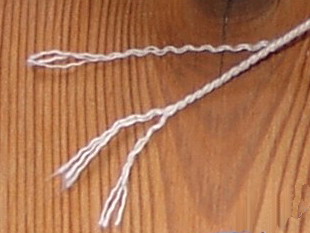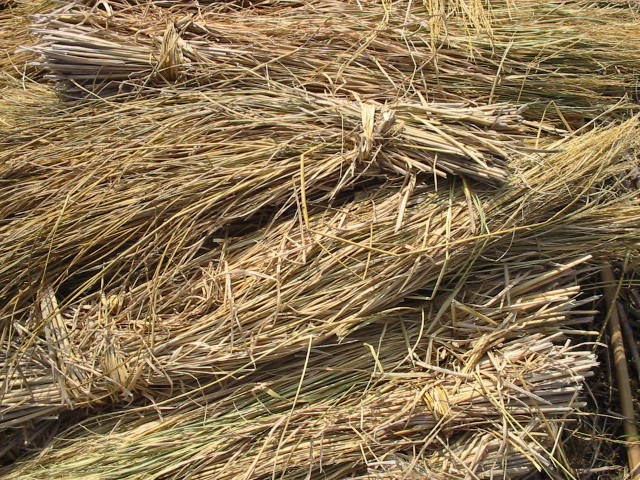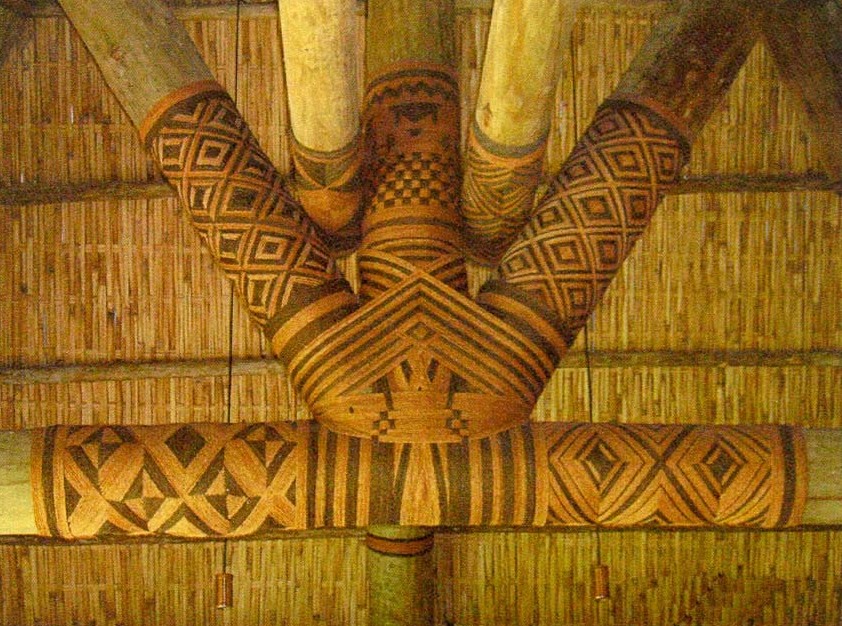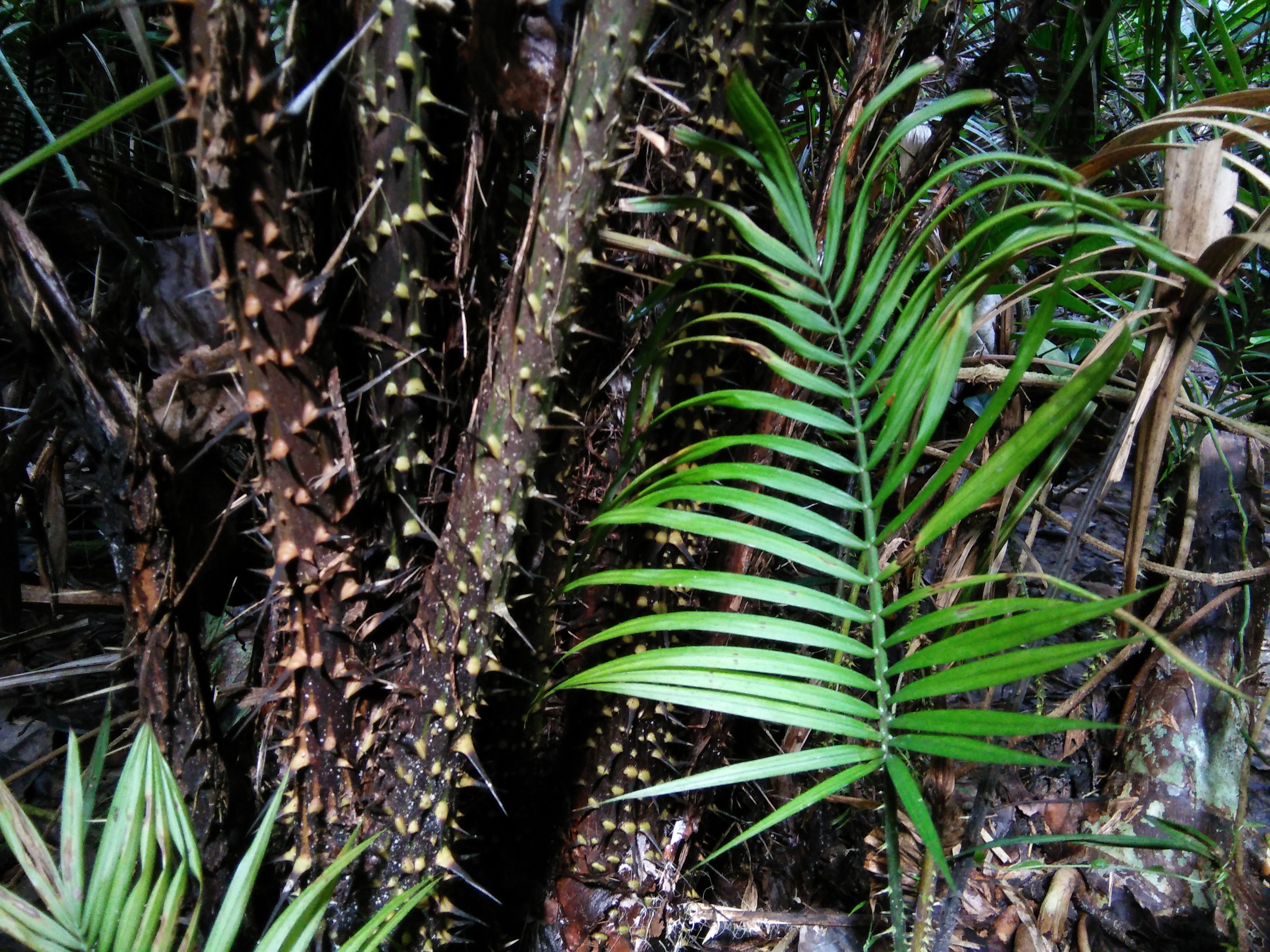|
Rope
A rope is a group of yarns, Plying, plies, fibres, or strands that are plying, twisted or braided together into a larger and stronger form. Ropes have high tensile strength and can be used for dragging and lifting. Rope is thicker and stronger than similarly constructed cord, String (structure), string, and twine. Construction Rope may be constructed of any long, stringy, fibrous material (e.g., rattan, a natural material), but generally is constructed of certain natural fibre, natural or synthetic fibre, synthetic fibres. Synthetic fibre ropes are significantly stronger than their natural fibre counterparts, they have a higher tensile strength, they are more resistant to rotting than ropes created from natural fibres, and they can be made to float on water. But synthetic ropes also possess certain disadvantages, including slipperiness, and some can be damaged more easily by UV light. Common natural fibres for rope are Manila hemp, hemp, linen, cotton, coir, jute, straw, an ... [...More Info...] [...Related Items...] OR: [Wikipedia] [Google] [Baidu] |
Twine
Twine is a strong Thread (yarn), thread, light String (structure), string or cord composed of string in which two or more thinner strands are twisted, and then twisted together (Plying, plied). The strands are plied in the opposite direction to that of their twist, which adds torsional strength to the cord and keeps it from unravelling. This process is sometimes called reverse wrap. The same technique used for making twine is also used to make Thread (yarn), thread, which is thinner, yarn, and rope, which is stronger and thicker, generally with three or more strands. Natural fibres used for making twine include wool, cotton, sisal, jute, hemp, henequen, paper, and coir. A variety of synthetic fibres are also used. Twine is a popular substance used in modern-day crafting. Prehistoric The invention of twine is at least as important as the development of Stone tool, stone tools for early humans. Indeed, Elizabeth Wayland Barber has called the development of twine, which can be ... [...More Info...] [...Related Items...] OR: [Wikipedia] [Google] [Baidu] |
Straw
Straw is an agricultural byproduct consisting of the dry wikt:stalk, stalks of cereal plants after the grain and chaff have been removed. It makes up about half of the crop yield, yield by weight of cereal crops such as barley, oats, rice, rye and wheat. It has a number of different uses, including fuel, livestock bedding and fodder, thatching and basket making. Straw is usually gathered and stored in a straw bale, which is a wikt:bale, bale, or bundle, of straw tightly bound with twine, wire, or string. Straw bales may be square, rectangular, star shaped or round, and can be very large, depending on the type of baler used. Uses Current and historic uses of straw include: Animal feed Straw may be fed as part of the roughage component of the diet to cattle or horses that are on a near maintenance level of energy requirement. It has a low digestible energy and nutrient content (as opposed to hay, which is much more nutritious). The heat generated when microorganisms in a h ... [...More Info...] [...Related Items...] OR: [Wikipedia] [Google] [Baidu] |
Coir
Coir (), also called coconut fibre, is a natural fibre extracted from the outer husk of coconut, and used in products such as floor mats, doormats, brushes, and mattresses. Coir is the fibrous material found between the hard, internal shell and the outer coat of a coconut. Other uses of brown coir (made from ripe coconut) are in upholstery padding, sacking and horticulture. White coir, harvested from unripe coconuts, is used for making finer brushes, string, rope and fishing nets. It has the advantage of not sinking, so can be used in long lengths in deep water without the added weight dragging down boats and buoys. Coir must not be confused with coir pith, which is the powdery and spongy material resulting from the processing of the coir fibre. Coir fibre is locally named 'coprah' in some countries, adding to confusion. Pith is chemically similar to coir, but contains much shorter fibers. The name coco peat may refer either to coir or the pith or a mixture, as both have goo ... [...More Info...] [...Related Items...] OR: [Wikipedia] [Google] [Baidu] |
Cordage En Chanvre
Cordage may refer to: * Rigging, cords and ropes attached to masts and sails on a ship or boat * Rope, yarns, plies or strands twisted or braided together into a larger form See also * String (other) * Cord (other) Cord or CORD may refer to: Common meanings * String * Thin rope * Twine * Cord (unit) used for measuring wood * Power cord * Umbilical cord Cord or CORD may also refer to: Places * Cord, Arkansas People * Alex Cord (1933–2021), A ... * Rope (other) {{disambiguation ... [...More Info...] [...Related Items...] OR: [Wikipedia] [Google] [Baidu] |
Braid
A braid (also referred to as a plait; ) is a complex structure or pattern formed by interlacing three or more strands of flexible material such as textile yarns, wire, or hair. The simplest and most common version is a flat, solid, three-stranded structure. More complex patterns can be constructed from an arbitrary number of strands to create a wider range of structures (such as a fishtail braid, a five-stranded braid, rope braid, a French braid and a waterfall braid). The structure is usually long and narrow with each component strand functionally equivalent in zigzagging forward through the overlapping mass of the others. It can be compared with the process of weaving, which usually involves two separate perpendicular groups of strands ( warp and weft). Historically, the materials used have depended on the indigenous plants and animals available in the local area. During the Industrial Revolution, mechanized braiding equipment was invented to increase production. The braidi ... [...More Info...] [...Related Items...] OR: [Wikipedia] [Google] [Baidu] |
String (structure)
String is a long flexible tool made from fibers twisted together into a single strand, or from multiple such strands which are in turn twisted together. String is used to tie, bind, or hang other objects. It is also used as a material to make things, such as textiles, and in arts and crafts. String is a simple tool, and its use by humans is known to have been developed tens of thousands of years ago.Susan Toby Evans, David L. Webster, ''Archaeology of Ancient Mexico and Central America: An Encyclopedia'' (2013), p. 812. In Mesoamerica, for example, string was invented some 20,000 to 30,000 years ago, and was made by twisting plant fibers together. String may also be a component in other tools, and in devices as diverse as weapons, musical instruments, and toys. History String, along with twine and other Rope, cordage, was used in prehistoric times for hafting sharp stone tips onto spears, in beadwork, to ease Firelighting#Friction, firelighting (as part of a bow drill, as well ... [...More Info...] [...Related Items...] OR: [Wikipedia] [Google] [Baidu] |
Hemp
Hemp, or industrial hemp, is a plant in the botanical class of ''Cannabis sativa'' cultivars grown specifically for industrial and consumable use. It can be used to make a wide range of products. Along with bamboo, hemp is among the fastest growing plants on Earth. It was also one of the first plants to be spun into usable fiber 50,000 years ago. It can be refined into a variety of commercial items, including paper, rope, textiles, clothing, Bioplastic, biodegradable plastics, paint, Thermal insulation, insulation, biofuel, food, and Fodder, animal feed. Although chemotype I cannabis and hemp (types II, III, IV, V) are both ''Cannabis sativa'' and contain the psychoactive component tetrahydrocannabinol (THC), they represent distinct cultivar groups, typically with unique phytochemistry, phytochemical compositions and uses. Hemp typically has lower concentrations of total THC and may have higher concentrations of cannabidiol (CBD), which potentially mitigates the Psychoactive ... [...More Info...] [...Related Items...] OR: [Wikipedia] [Google] [Baidu] |
Synthetic Fibre
Synthetic fibers or synthetic fibres (in British English; see spelling differences) are fibers made by humans through chemical synthesis, as opposed to natural fibers that are directly derived from living organisms, such as plants like cotton or fur from animals. They are the result of extensive research by scientists to replicate naturally occurring animal and plant fibers. In general, synthetic fibers are created by extruding fiber-forming materials through spinnerets, forming a fiber. These are called synthetic or artificial fibers. The word polymer comes from a Greek prefix "poly" which means "many" and suffix "mer" which means "single units". (Note: each single unit of a polymer is called a monomer). The first synthetic fibres Nylon was the first commercially successful synthetic thermoplastic polymer. DuPont began its research project in 1927. The first nylon, nylon 66, was synthesized on February 28, 1935, by Wallace Hume Carothers at DuPont's research facility at the ... [...More Info...] [...Related Items...] OR: [Wikipedia] [Google] [Baidu] |
Jute
Jute ( ) is a long, rough, shiny bast fibre that can be Spinning (textiles), spun into coarse, strong threads. It is produced from flowering plants in the genus ''Corchorus'', of the mallow family Malvaceae. The primary source of the fiber is ''Corchorus olitorius'', but such fiber is considered inferior to that derived from ''Corchorus capsularis''. Jute fibers, composed primarily of cellulose and lignin, are collected from bast (the phloem of the plant, sometimes called the "skin"). The industrial term for jute fiber is ''raw jute''. The fibers are off-white to brown and range from long. In Bangladesh, jute is called the "golden fiber" for its color and monetary value. The bulk of the jute trade is centered in South Asia, with India and Bangladesh as the primary producers. The majority of jute is used for durable and sustainable packaging, such as Gunny sack, burlap sacks. Its production and usage declined as Disposable product, disposable plastic packaging became common, b ... [...More Info...] [...Related Items...] OR: [Wikipedia] [Google] [Baidu] |
Polyethylene Terephthalate
Polyethylene terephthalate (or poly(ethylene terephthalate), PET, PETE, or the obsolete PETP or PET-P), is the most common thermoplastic polymer resin of the polyester family and is used in synthetic fibre, fibres for clothing, packaging, containers for liquids and foods, and thermoforming for manufacturing, and in combination with glass fibre for engineering resins. In 2016, annual production of PET was 56 million tons. The biggest application is in fibres (in excess of 60%), with bottle production accounting for about 30% of global demand. In the context of textile applications, PET is referred to by its common name, polyester, whereas the acronym ''PET'' is generally used in relation to packaging. PET used in non-fiber applications (i.e. for packaging) makes up about 6% of world polymer production by mass. Accounting for the >60% fraction of polyethylene terephthalate produced for use as polyester fibers, PET is the fourth-most-produced polymer after polyethylene (PE), polypr ... [...More Info...] [...Related Items...] OR: [Wikipedia] [Google] [Baidu] |
Rattan
Rattan, also spelled ratan (from Malay language, Malay: ''rotan''), is the name for roughly 600 species of Old World climbing palms belonging to subfamily Calamoideae. The greatest diversity of rattan palm species and genera are in the closed-Canopy (biology), canopy Old-growth forest, old-growth tropical forests of Southeast Asia, though they can also be found in other parts of tropical Asia and Africa. Most rattan palms are ecologically considered lianas due to their climbing habits, unlike other palm species. A few species also have tree-like or shrub-like habits. Around 20% of rattan palm species are economically important and are traditionally used in Southeast Asia in producing wickerwork furniture, baskets, Walking stick, canes, woven mats, Rope, cordage, and other handicrafts. Rattan canes are one of the world's most valuable non-timber forest products. Some species of rattan also have edible scaly fruit and heart of palm. Despite increasing attempts in the last 30 y ... [...More Info...] [...Related Items...] OR: [Wikipedia] [Google] [Baidu] |
Polypropylene
Polypropylene (PP), also known as polypropene, is a thermoplastic polymer used in a wide variety of applications. It is produced via chain-growth polymerization from the monomer Propene, propylene. Polypropylene belongs to the group of polyolefins and is Crystallization of polymers#Degree of crystallinity, partially crystalline and Chemical polarity#Nonpolar molecules, non-polar. Its properties are similar to polyethylene, but it is slightly harder and more heat-resistant. It is a white, mechanically rugged material and has a high chemical resistance. Polypropylene is the second-most widely produced Commodity plastics, commodity plastic (after polyethylene). History Phillips Petroleum chemists J. Paul Hogan and Robert Banks (chemist), Robert Banks first demonstrated the polymerization of propylene in 1951. The stereoselective polymerization to the isotactic was discovered by Giulio Natta and Karl Rehn in March 1954. This pioneering discovery led to large-scale commercial producti ... [...More Info...] [...Related Items...] OR: [Wikipedia] [Google] [Baidu] |






